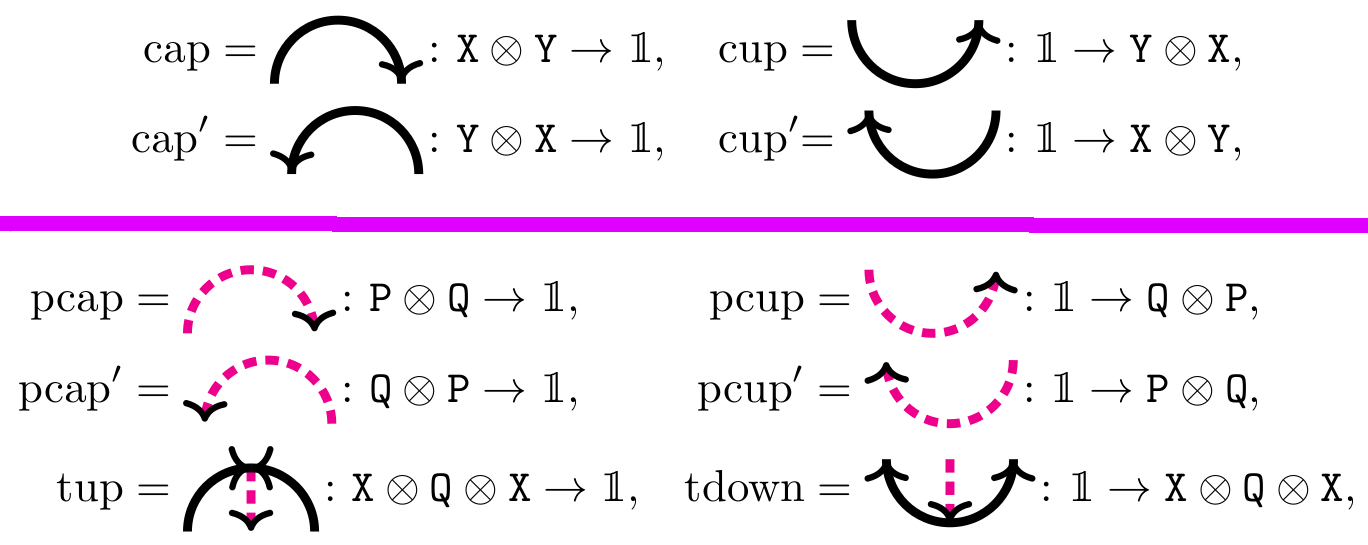Data
- Title: On rank one 2-representations of web categories
- Authors: Daniel Tubbenhauer
- Status: Algebr. Comb. Volume 7 (2024) no. 6, pp. 1813-1843. Last update: Tue, 10 Dec 2024 05:57:33 UTC
- Code and (possibly empty) Erratum: GitHub
- ArXiv link: https://arxiv.org/abs/2307.00785
Abstract
We classify rank one 2-representations of \(\mathrm{SL}_{2}\), \(\mathrm{GL}_{2}\) and \(\mathrm{SO}_{3}\) web categories. The classification is inspired by similar results about quantum groups, given by reducing the problem to the classification of bilinear and trilinear forms, and is formulated such that it can be adapted to other web categories.
A few extra words
The pictures to keep in mind while reading the below are the following, showing, in order,
\(\mathrm{SL}_{2}\),
\(\mathrm{GL}_{2}\) and
\(\mathrm{SO}_{3}\) webs.
\(\mathrm{SL}_{2}\) webs, also known as Temperley-Lieb diagrams are:


\(\mathrm{SO}_{3}\) webs are:

The problem of classifying symmetric and alternating bilinear forms is well-known and has a very pleasant answer. Less well-known but still doable and nice is the classification of all bilinear forms. On the other hand, the classification of trilinear forms seems tractable for small dimensions only, even if one restricts to symmetric or alternating forms. However, for small dimensions there is indeed a classification of trilinear forms.
In this note we will see a similar behavior for the three web categories above. The classification problem we have in mind for these categories is to study the easiest form of actions of these categories on finite dimensional complex vector spaces. That is, we want to classify rank one simple transitive 2-representations of these web categories.
We also analyze the complexity of the corresponding classification problems.
